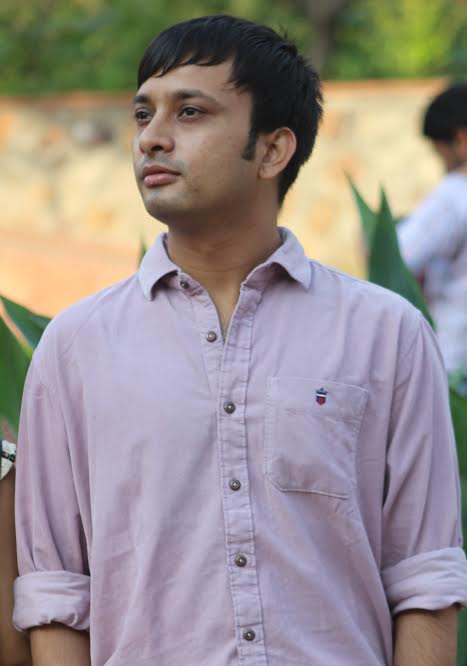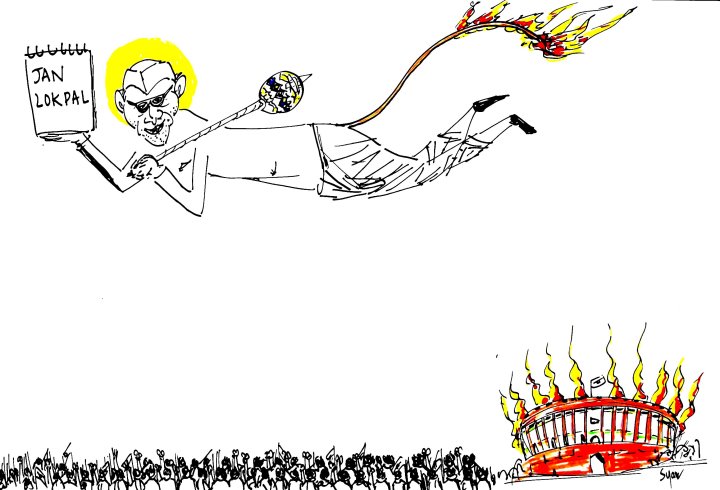Sthabir Khora
 The issue of creamy layer among SC/ST has finally reached the Supreme Court (http://www.thehindu.com/news/national/plea-to-exclude-scst-creamy-layer-from-quota/article22544974.ece). There is no escape from debating this issue now. Social issues always have more than one side. The issue of creamy layer has already been discussed by a few – against creamy layer (Chaudhury, 2004; Srinivas, 2007; Sundaram, 2007) and justifying it (Pandian, 2000, Subramanian, 2006). This article will discuss hitherto undiscussed ramifications of applying creamy layer to SC/ST reservation in government employment.
The issue of creamy layer among SC/ST has finally reached the Supreme Court (http://www.thehindu.com/news/national/plea-to-exclude-scst-creamy-layer-from-quota/article22544974.ece). There is no escape from debating this issue now. Social issues always have more than one side. The issue of creamy layer has already been discussed by a few – against creamy layer (Chaudhury, 2004; Srinivas, 2007; Sundaram, 2007) and justifying it (Pandian, 2000, Subramanian, 2006). This article will discuss hitherto undiscussed ramifications of applying creamy layer to SC/ST reservation in government employment.
A government job is a combination of three aspects – livelihood to the holder, service to people and power conferred for doing the service
The creamy layer principle sees government jobs predominantly as a ‘benefit’. But a government job has three aspects – livelihood to the holder, service to people and power conferred for doing the service. Higher the job, lower the livelihood quotient and higher the service and power quotient. Livelihood aspect of a collector’s job is much less in contrast to a class IV employee. Reservation is considered as ‘benefit’ only focusing on the livelihood aspect. People have a tendency to slip into naming reservation as a benefit. Yogendra Yadav writes-
This would mean, for example, that the privileged among the SC are not excluded altogether from the benefits of reservation but are placed at the end of the queue. They get to enjoy the benefits of reservation only if there are slots left after the non-privileged SC candidates have been accommodated. (http://www.india-seminar.com/2009/601/601_yogendra_yadav.htm; italics mine).
Of course elsewhere he does not forget to mention the power dimension. This is just to show that we slip into naming reservation as a benefit.
The justification of each component is based on different justifications as follows.
Power– The sole justification for suitability is representation. For example, one does not raise the issue of merit in the usual sense of educational qualification etc in political representation, which is about power sharing. Identity is prime qualification here. In group representation none should be under-represented. But a corollary to this is that none should be over-represented as well. The reasons why none should be under-represented is two- intrinsic (as a democratic value), instrumental (to take care of their interest). For these two reasons there should not be over representation of any group as the over-represented group is likely to take care of its interest disproportionately.
Livelihood-Here the suitability is the degree of economic deprivation.
Service/job– Here the suitability is so called merit. One should bear in mind that the name is ‘civil service’, not individual gratification. However ‘civil service’ in India is more of a ‘fair allocation’ than merit in the sense of ‘likelihood of performance’. There is no logical link between one’s performance in ‘Pali’ or ‘Sanskrit’ language and the job of a collector.
Opportunity always means opportunity to live, not die. We don’t agree with statement like ‘I am giving an opportunity to you to die’. This means that people are competing for the livelihood and power quotient of the jobs than the service quotient. That’s why there is shortage of people for jobs in armed forces though it provides a good economic package. It is the state’s interest that you serve well. ‘Opportunity to serve the country’ is a ‘suitable’ answer in the interview. This can not be raised to the level of truth because there is another saying ‘power corrupts’.
The creamy layer restriction is not applicable to power (representation) and service aspects of government jobs (bureaucracy). For example, with respect to power sharing aspect, we can not complain about industrialists becoming MP, MLA and serving the country. Thus when upper castes are talking about ‘equal importunity’ they are only asking the benefit (livelihood) and power part of a job and not the service part.
Who is the most deserving- deprivation vs contribution
There are two ways we can decide who is the most deserving for the reservation- retrospective and prospective. In a backward move, we have to see who has suffered the most and in a forward move we have to see who is going to do justice to the job. If we look backward then the most deserving might be dead. Actually the forefathers of SC/ST, the most deserving because they suffered, are dead. In the present time many who get Param Vir Chakra get it posthumously. Creamy layer is applicable only to this aspect and not in the aspect of contribution. Deciding who is the most deserving has to be a balancing act between deprivation and contribution. The person most deserving from deprivation point of view may not have requisite contribution capacity for the ‘service’.
Creamy layer is justified to kick in when existing quota is filled to the brim and there is pressure outward
The issue of someone taking from someone else’s seats arises when there is no vacancy. But one of the excuses given for widespread vacancy of reserved seats is non-availability of suitable candidates. In fact earlier such seats were converted to general category. Even now in class I and II jobs Scheduled Caste/Scheduled Tribe reserved category is not fully filled up. (https://economictimes.indiatimes.com/news/politics-and-nation/sc/sts-fail-to-break-caste-ceiling-no-sc-in-149-top-government-officers-40-pc-do-menial-jobs/articleshow/16278743.cms).
Secondly, if poor SC/ST complain about economics as the roadblock, then government has many schemes in the form of scholarships, hostels, coaching etc to aid them in competing. Nothing stops the government to better these schemes quantitatively and qualitatively.
Representation – quantitative and qualitative
So far reservation/representation is predominantly constructed in a quantitative manner. It has not been thought of in a qualitative manner. What matters is not only quantity of representation but quality of representation. If one were to figure out the creamy layer of the Indian state, then it would be higher judiciary, science and technical personnel and defence. This is the real creamy layer. There is no reservation here though ideally there should have been because this is the prime lever of power. ‘General’ would be dominant here because the creamy layer debate starts with the assumption that creamy layer captures (for representation in higher civil services see http://pib.nic.in/newsite/PrintRelease.aspx?relid=132395). Only ‘creamy layer-scheduled caste /scheduled tribe’ has some possibility of trickling in to this ‘general-creamy layer’. If there is no reservation in the general-creamy layer then preventing SC/ST ab initio in to this through creamy layer restriction is injustice.
If there is a notion called ‘group merit’ then there can also be a notion called ‘group threshold’. If a SC/ST becomes IAS at the age of 33, his individual problem is over. But group problem is not over until a SC/ST reaches to the level of secretary of social justice department. That can happen only s/he clears IAS at 21. The probability of such a happenstance is greater only among creamy layer –SC/ST.
Who is entitled to define which sphere has to be reservation free? ‘We the people’, which is supposed to have given us the constitution, will look vacuous if we strip it of Scheduled Castes/Scheduled Tribes. Thus reservation is not a ‘benefit’ given by non-SC/ST to SC/ST but SC/ST themselves are entitled as part of ‘we the people’ to define the scope and contour of reservation.
Pitting Creamy layer-SC/ST against ‘creamy layer-general’ violates principle of equality
Creamy layer is about bringing a class framework in the form of economic criteria. The constitution uses the word caste and tribe in case of SC/ST and class in case of OBC. Everybody is ‘free’ to compete in the ‘general’ category. Free automatically doesn’t mean ‘fair’. Therefore we say ‘free and fair’ election. We use the word ‘free market’ and ‘fair price’. The general category is not caste based. Thus one can bring class framework in it. Therefore it is constitutionally permissible to bring class in the sense of economic class into the OBC and general.
Additionally creamy layer-SC/ST won’t be competing against the ‘general-general’ but ‘general-creamy layer’. The creamy layer debate presumes that the creamy layer corners most of the jobs within a particular category. This must be true in case of general category as well. When a Creamy layer-SC/ST will be thrown into the general category then they will be competing not against the ‘general-general’ but the ‘creamy layer-general’. This will be the point of injustice. Pitting Creamy layer-SC/ST against general-creamy layer violates principle of equality. It’s anybody’s guess that whether they will stand a chance. This can be rhetorically represented as – in SC/ST there is a creamy layer, but the general category is full of cream.
Continuous hierarchy or discrete categories
Sociology students are familiar with these terms of Dipankar Gupta. The general, the OBC and the SC/ST can be seen as a hierarchical system – roughly the upper castes, the middle castes, and lower/untouchable castes. If you treat this as continuous hierarchy then you should apply any principle to the three categories and not just one category- for example creamy layer. In this scheme there will be a creamy layer in each category. On the other hand, if you treat the three as discrete categories then a person belonging to one category cannot belong to another category. SC/ST belonging to creamy layer are still a sub-category of SC/ST. They do not become general.
If the general category is treated as a residual category devoid of caste, class and gender, then any SC/ST qualifying under that category is no more SC/ST but general and for analytic purpose loses his/her caste status. You cannot then claim that some well off SC/ST are taking away the general seats. In fact, while deciding the deserving in the general category one has to be caste, class and gender blind. An SC/ST can qualify only once – either in general category as general or in reserved as SC/ST. So the creamy layer getting a double chance argument does not hold.
One can go in two ways- group way and the individual way. Mixing both can create problems. You can not only bring class into the caste but any other stratifier like gender. Bringing too much of individual rights destroys a group right. When we create a group right, we have to refrain from applying too much of individual rights. Otherwise the group right can be taken away by applying individual rights. This is giving in one hand and taking away in another.
Beyond economics- the social and cultural capital
Economic criteria like income are discredited in economics itself where the current fashion seems to be ‘inclusive growth’, ‘inclusive development’, ‘human development index’ etc. Legally speaking a person may earn crores, but you cannot impute that to his married daughter though practically he may support his daughter all the way.
The legal problem arises only when law takes cognizance of only the economic capital. An SC/ST and general of same income is equal only if everything else is same. But social and cultural capital, which is well accepted in social sciences, if judiciary takes cognizance of, then probably will hesitate to equal a Brahmin and Dalit with equal income because cultural and social capital of both will differ widely. Empirically this can be brought out by posing a question – after becoming IAS, which group the SC/ST belongs- the SC/ST group where there is a sprinkling of IAS or the ‘general’ group of IAS! They will be nowhere close to the social capital (network) of a Brahmin IAS given that the creamy layer of the Indian state is a general-creamy layer.
~
References
Srinivas K Ravi, 2007, Demystifying The anti-Creamy Layer, Economic and Political Weekly, 42(04): 327-328.
Chaudhury Pradipta, 2004, The ‘Creamy Layer’, Economic and Political Weekly, 39 (20): 1989-1991
Pandian MSS, 2000, Reservation Policy: Myth of Creamy Layer, Economic and Political Weekly , 35 (17): 2000
Srinivas K Ravi, 2007, Demystifying The anti-Creamy Layer, Economic and Political Weekly, 42(04): 327-328.
Subramanian S, 2006, Examining the ‘Creamy Layer’ Principle, Economic and Political Weekly, 41(45): 4643-4645
Sundaram K, 2007, Creamy Layer’ Principle: A Comment, Economic and Political Weekly ,42(04): 326-327
~~~
Dr Sthabir Khora is Associate Professor in the School of Education, Tata Institute of Social Sciences. His book “Education and Teacher Professionalism” (2011, Jaipur: Rawat Publications) is recommended reading in the M.Ed Syllabus of Punjabi University, Patiala.










